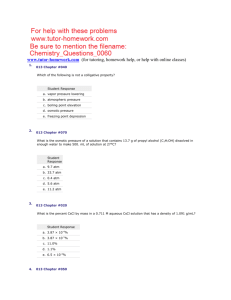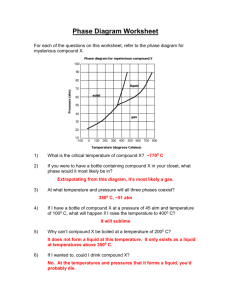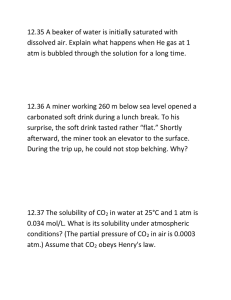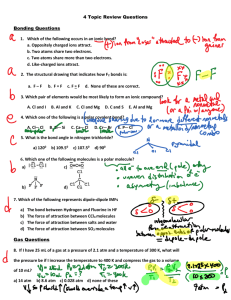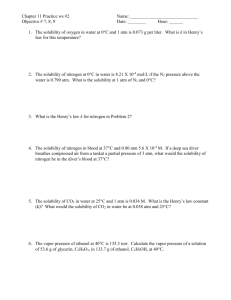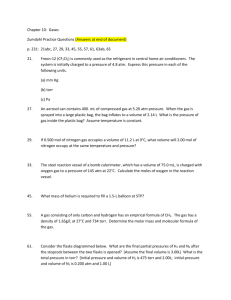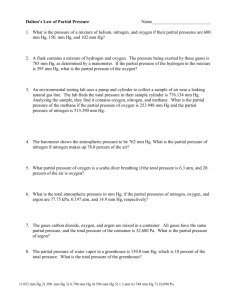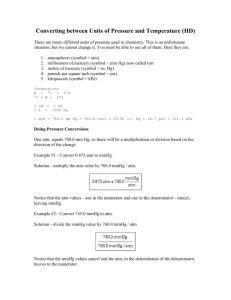Chem 104 Problem Set #1
advertisement
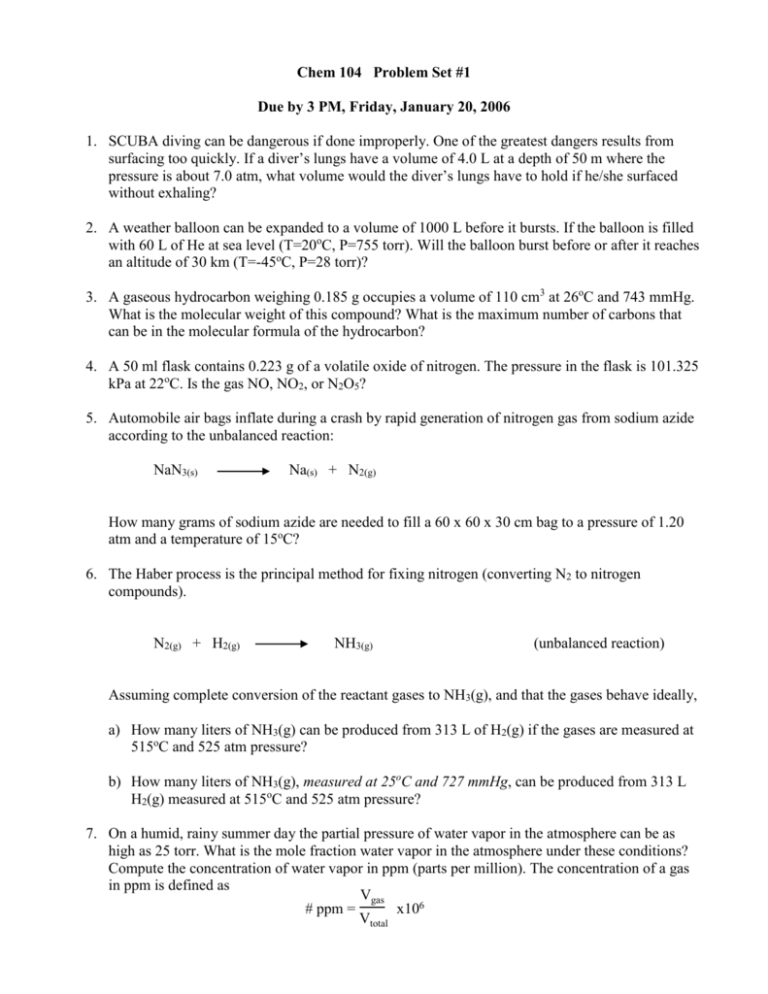
Chem 104 Problem Set #1 Due by 3 PM, Friday, January 20, 2006 1. SCUBA diving can be dangerous if done improperly. One of the greatest dangers results from surfacing too quickly. If a diver’s lungs have a volume of 4.0 L at a depth of 50 m where the pressure is about 7.0 atm, what volume would the diver’s lungs have to hold if he/she surfaced without exhaling? 2. A weather balloon can be expanded to a volume of 1000 L before it bursts. If the balloon is filled with 60 L of He at sea level (T=20oC, P=755 torr). Will the balloon burst before or after it reaches an altitude of 30 km (T=-45oC, P=28 torr)? 3. A gaseous hydrocarbon weighing 0.185 g occupies a volume of 110 cm3 at 26oC and 743 mmHg. What is the molecular weight of this compound? What is the maximum number of carbons that can be in the molecular formula of the hydrocarbon? 4. A 50 ml flask contains 0.223 g of a volatile oxide of nitrogen. The pressure in the flask is 101.325 kPa at 22oC. Is the gas NO, NO2, or N2O5? 5. Automobile air bags inflate during a crash by rapid generation of nitrogen gas from sodium azide according to the unbalanced reaction: NaN3(s) Na(s) + N2(g) How many grams of sodium azide are needed to fill a 60 x 60 x 30 cm bag to a pressure of 1.20 atm and a temperature of 15oC? 6. The Haber process is the principal method for fixing nitrogen (converting N2 to nitrogen compounds). N2(g) + H2(g) NH3(g) (unbalanced reaction) Assuming complete conversion of the reactant gases to NH3(g), and that the gases behave ideally, a) How many liters of NH3(g) can be produced from 313 L of H2(g) if the gases are measured at 515oC and 525 atm pressure? b) How many liters of NH3(g), measured at 25oC and 727 mmHg, can be produced from 313 L H2(g) measured at 515oC and 525 atm pressure? 7. On a humid, rainy summer day the partial pressure of water vapor in the atmosphere can be as high as 25 torr. What is the mole fraction water vapor in the atmosphere under these conditions? Compute the concentration of water vapor in ppm (parts per million). The concentration of a gas in ppm is defined as Vgas # ppm = x106 Vtotal 8. A 1.76-g sample aluminum reacts with excess HCl and the liberated H2 is collected over water at 26oC at a barometric pressure of 738 mmHg. What total volume of gas is collected? (Vapor pressure of water at 26oC = 25.2 mmHg.) Al(s) + HCl(aq) AlCl3(aq) + H2(g) (unbalanced reaction) 9. Nitroglycerin, the explosive ingredient in dynamite, decomposes violently to produce carbon dioxide, nitrogen, oxygen, and liquid water. a) Find the formula for nitroglycerin and write the balanced equation for the decomposition reaction. b) What is the mole fraction of each gas produced in this reaction? c) How many moles of gas are produced when 1.00 kg of nitroglycerin explodes? d) What volume would the gases occupy at 1.00 atm and 25oC? e) Compute the partial pressure of each product gas at a total pressure of 1.00 atm.

